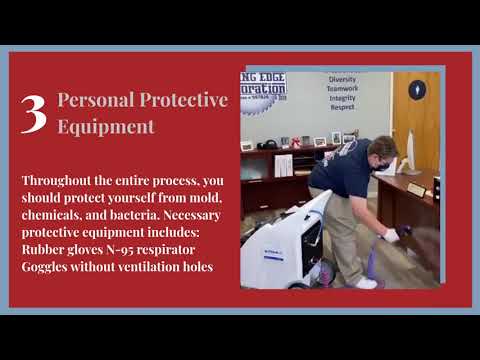
One inch of floodwater in your home can cost $27,000 to clean up.
One way to cut back on costs is to begin water damage removal as soon as possible. If flood water is left too long, it will seep into hard to repair nooks and crannies.
Thankfully, most homeowners never have to deal with serious flooding. But accidents still happen and you need to know how to deal with the aftermath.
This quick guide will help you deal with the fallout from serious flooding. With any luck, it will save you from spending thousands of dollars in clean-up costs.
1. Know What Kind of Flood Water You’re Dealing With
There are three types of floodwater. To avoid getting sick, you need to know what type you’re cleaning up.
Clean water flooding comes from burst pipes, condensation, and rain. It’s the cheapest flooding type to clean up after. Expect to pay up to $3.75 per square foot if you hire expert help
Gray water flooding involves dirty water from washing machines, clean toilets, and dishwashers. The water contains mild contaminants and requires safety gear to clean. It costs about a dollar more per square foot for professional clean up.
Blackwater contains sewage or water from nearby rivers. Due to dangerous bacteria, do not try to clean up black water yourself. Professional clean up costs go up to around $7 per square foot.
2. How to Soak Up Water From the Floor
The first and most important step is to shut off the electricity in the flooded areas. Do not step into a flooded room with the power on. You may be electrocuted.
Next, clear the majority of the water. This step may require pumping water out of our home. You can also use large buckets to move it.
If the room is near an exterior door, you can push the last inch or so out. Use a floor squeegee or push broom.
Make sure there is plenty of ventilation in the room. A closed-off room will encourage mold growth.
3. Personal Protective Equipment
Throughout the entire process, you should protect yourself from mold, chemicals, and bacteria.
Necessary protective equipment includes:
- Rubber gloves
- N-95 respirator
- Goggles without ventilation holes
Do not enter the flood-damaged area without this equipment. Exposure to microorganisms from flooding can cause health problems for years after.
4. Preventing Mold
The number one threat after flooding is mold. Exposure to mold causes upper respiratory distress and other problems.
A large part of water damage removal is taking out porous materials. These materials become mold breeding grounds because they retain water.
Items to remove include:
- Drywall
- Carpet
- Upholstered furniture
- Insulation
If you are unsure if something should be removed, consult a professional. They know where to check for hidden mold.
5. Make Sure the Floor is Safe
Wooden floors expand during flooding. If boards aren’t removed, it will cause buckling. Certain types of flooring will need a professional to remove damaged boards.
The subfloors can likewise swell and buckle from flooding. They must be fully dried and repaired. Uneven subfloors are a hazard.
Need Help With Post-Flood Water Damage Removal?
Flood water damage removal can be overwhelming. That’s why we’re here to help.
Contact Cutting Edge Restoration to take care of your post-flood problems. We offer 24/7 emergency services.

